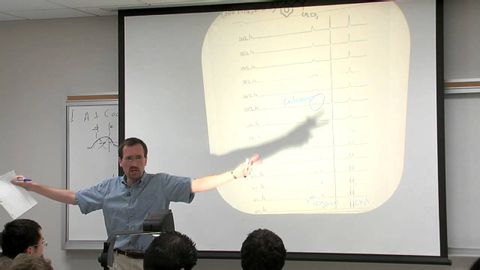
Subtitles & vocabulary
Chem 203. Organic Spectroscopy. Lecture 18. Dynamic Effects in NMR Spectroscopy
00
Cheng-Hong Liu posted on 2015/02/02Save
Video vocabulary
negative
US /ˈnɛɡətɪv/
・
UK /'neɡətɪv/
- Noun
- The opposite to a positive electrical charge
- In grammar, containing words such as 'no' or 'not'
- Adjective
- Being harmful, unwanted or unhelpful
- In mathematics, being less than zero
A2
More question
US /ˈkwɛstʃən/
・
UK /'kwestʃən/
- Transitive Verb
- To ask for or try to get information
- To have or express concerns or uncertainty
- Noun (Countable/Uncountable)
- Issue or problems you are dealing with
- A sentence worded or expressed so as to elicit information.
A1
More barrier
US /ˈbæriɚ/
・
UK /'bærɪə(r)/
- Noun
- Difficult situation preventing something happening
- Structure or object that stops free movement
B1TOEIC
More bond
US /bɑnd/
・
UK /bɒnd/
- Noun (Countable/Uncountable)
- Rope, chain or other thing used to tie someone up
- Closeness that is shared between people or groups
- Verb (Transitive/Intransitive)
- To develop a close relationship with
- To become joined or connected, e.g. using glue
A2TOEIC
More Use Energy
Unlock All Vocabulary
Unlock pronunciation, explanations, and filters
